"Our dress…in order to serve its purpose effectually, should not only be expensive, but it should also make plain to all observers that the wearer is not engaged in any kind of productive labor… A detailed examination of what passes in popular apprehension for elegant apparel will show that it is contrived at every point to convey the impression that the wearer does not habitually put forth any useful effort. […]
"The dress of women goes even farther than that of men in the way of demonstrating the wearer's abstinence from productive employment. It needs no argument to enforce the generalization that the more elegant styles of feminine bonnets go even farther towards making work impossible than does the man's high hat. The woman's shoe adds the so-called French heel to the evidence of enforced leisure afforded by its polish; because this high heel obviously makes any, even the simplest and most necessary manual work extremely difficult. […]
"But the woman's apparel not only goes beyond that of the modern man in the degree in which it argues exemption from labor; it also adds a peculiar and highly characteristic feature which differs in kind from anything habitually practiced by the men. This feature is the class of contrivances of which the corset is the typical example. The corset is, in economic theory, substantially a mutilation, undergone for the purpose of lowering the subject's vitality and rendering her permanently and obviously unfit for work. It is true, the corset impairs the personal attractions of the wearer, but the loss suffered on that score is offset by the gain in reputability which comes of her visibly increased expensiveness and infirmity. It may broadly be set down that the womanliness of woman's apparel resolves itself, in point of substantial fact, into the more effective hindrance to useful exertion offered by the garments peculiar to women" (emphases mine).For those unfamiliar with Veblen's sharp tongue, here it is in 21st century speak, with my own feminist slant added in:
- What is "fashionable" and "desirable" in a society conveys the impression that the wearer belongs to the "leisure class", i.e. can afford not to engage in something so distasteful as actual physical work
- Women in particular who aspire to fashion, by dint of the gender division of labour and women's station in life as symbolic extensions of their patriarchal figures, are expected to dress in a manner that actively impedes their range of movement, dexterity and stamina. Think Christian Louboutins, or the painful and crippling practice of foot-binding in dynastic China.
- The more frail, delicate, and obviously unfit for any kind of physical activity you are as a women, the better this reflects upon your social status, and more importantly, the social and economic status of your parents, boyfriend, or husband.
Thankfully, there have been some compromises for the modern-day woman. Flats are generally considered acceptance office wear (although in many industries, heels are still encourage for any engagements with clients). Unisex casual footwear (Converse, Vans, flip-flops) are not thorough objects of scorn and unwomanliness (although they will still get you kicked out of high-end restaurants). Shoemakers have cottoned onto the fact that women would prefer to have the height without sacrificing the ability to still walk (at least, get around a boardroom or a supermarket), and thus come up with such helpful innovations as the platform heel and wedges. Car designers have yet to discover a way for me to drive safely without having to remove my heels, but I expect they will eventually. ("Drives like a woman", oh, ha di-ha-hah.)
We live with these compromises every day. Live in them, literally, when it comes to fashion, every pair of shoes a consideration of the usual parameters: "Do they fit comfortably? What outfit will these go with?" But also some which are particular to women: "How far will I need to walk? Will I have to drive, or be driven? How long will I be able to stand up in them?"
And above all: "How much pain am I willing to tolerate, in this instance, for the sake of beauty?"
In my own personal case, the easy answer to the last is: Not much.
A look over my summer shoe collection here in China - leaving out my many, barely distinguishable pairs of black ballet flats which are worn to work on rotation - finds flats and mid-height heels in strong representation. What heels I do own, however, are all expressly chosen for their comfort. Seeing as I don't drive in China (and barely drive in Australia, either, to be honest), getting around mainly on foot, metro, or taxi, it is crucial that I be able to walk easily, even whilst carrying a handbag, a laptop bag, and a sack of heavy groceries, as it were. The condition of pedestrian spaces in Shanghai present further challenges: frequent roadwork, uneven pavements, slippery surfaces and poorly visible steps (accident liability being an underdeveloped arena in China).
Even my evening and party heels (magenta suede platforms, goes-with-everything black patent pumps, Milana slingbacks) have been altered or selected to accommodate the environment: leather outersoles overlaid with hard rubber to prevent slips and provide some cushioning for the foot, and colours on which cement dust will not show too obviously. I would not go so far as to say that I could run in them, much less harvest a field or do much housework, but I could definitely walk a mile or three without needing a male arm to steady me.
Rebeca Sanver suede & crocodile sandals // BCBGeneration espadrilles
Sheme blush peeptoe heels // Milana for David Jones taupe platform slingbacks
Chloe Chen magenta suede peeptoe platforms // Peeptoe patent heels
Photos: my Instagram (click to enlarge)
Sheme blush peeptoe heels // Milana for David Jones taupe platform slingbacks
Chloe Chen magenta suede peeptoe platforms // Peeptoe patent heels
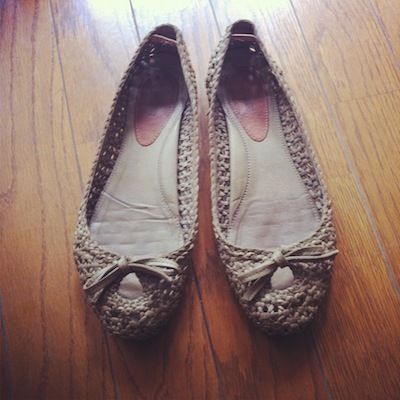
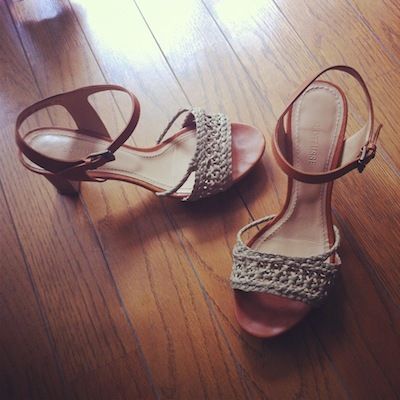
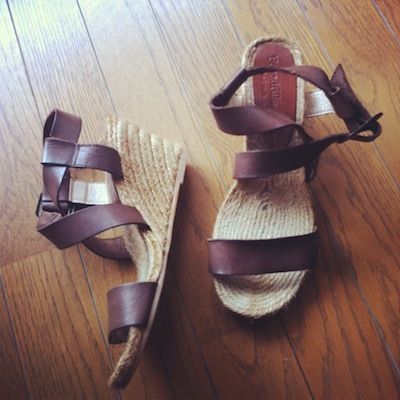
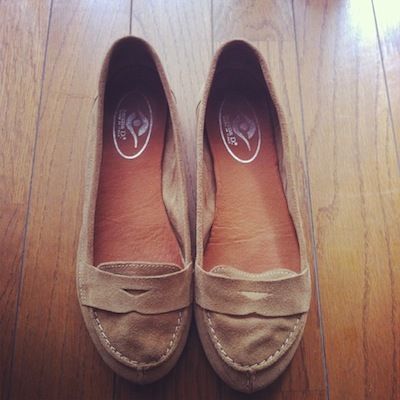
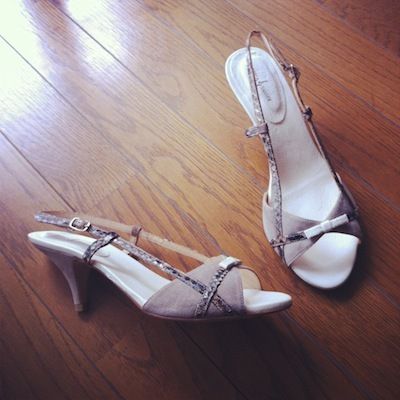

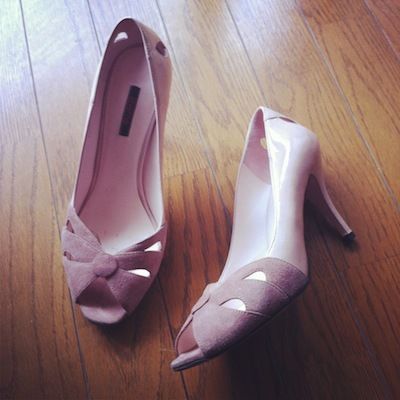
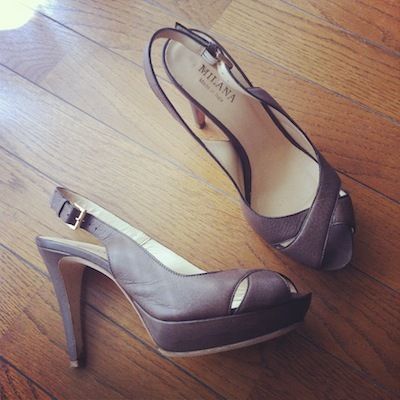
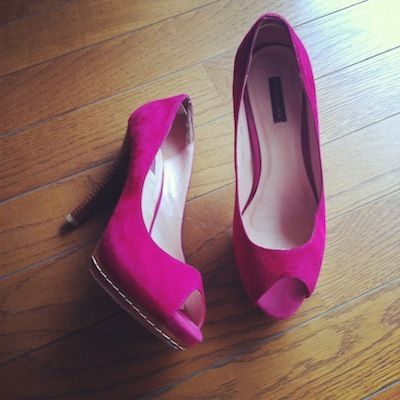
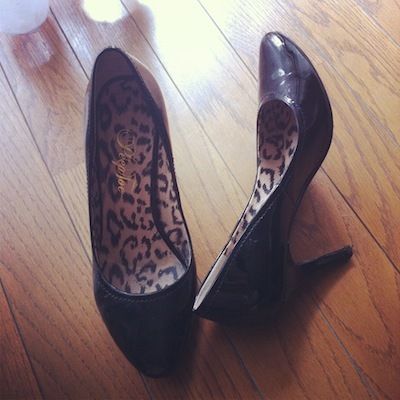
You've found the sweet spot between practical and ornamental: sensible.
ReplyDeleteIt's going to be a nightmare getting all this back to Sydney, is all I'm thinking...
ReplyDeleteAt some point, I despaired that I don't experiment with shoes as much as I should: I always seemed to buy the same shapes, the same predictable style, again and again.
ReplyDeleteBut now I think, looking at yours, that one must gravitate towards the particular shape that flatters one's particular foot.
I think it's partly that, and partly what kind of outfits you wear, and (at least in my case) partly what feels comfortable on your feet. For example, I have quite a shallow arch, large bony knuckles, wide feet (and the right wider than the left because of an old gymnastics injury). Certain styles of shoes literally hurt my feet, so I know to avoid them.
ReplyDeleteI've never read that particular excerpt before, but it confirms the suspicions I've long held about "feminine charms". I saw a lady the other day in the metro who was wearing red patent heels at must have been at least 11cm high: they were pretty (the most tasteful of the sky high heels I've seen thus far) but the woman was obviously in excruciating pain, she didn't walk, she staggered.
ReplyDeleteI have trouble finding shoes I can actually wear in heel-obsessed Korea. I have a foot arch that I suspect broke and never healed properly, and a very large discrepancy in the length of my metatarsals which means that I have to support myself on my first and second toes and scrunch up my pinky toe to compensate.
ReplyDeleteSo there are a LOT of considerations to take into account, as you said. Not the least because I'm also very picky when it comes to aesthetics. God, it's so much more complicated living as a woman.
My mother and I when driving in the CBD have a running joke where we watch the pedestrians crossing the street, and point out the fashionable women in unfortunate footwear, dashing to make the green light and looking ridiculous whilst doing so.
ReplyDeleteShanghai, funnily enough, is not at all heel-obsessed. Maybe partly because of the aging generation (low proportion of young people, who have grown up wearing heels, compared to other large cities outside of one-child China).
Very sensible Li..
ReplyDeletePlaka Tanıma Sistemleri